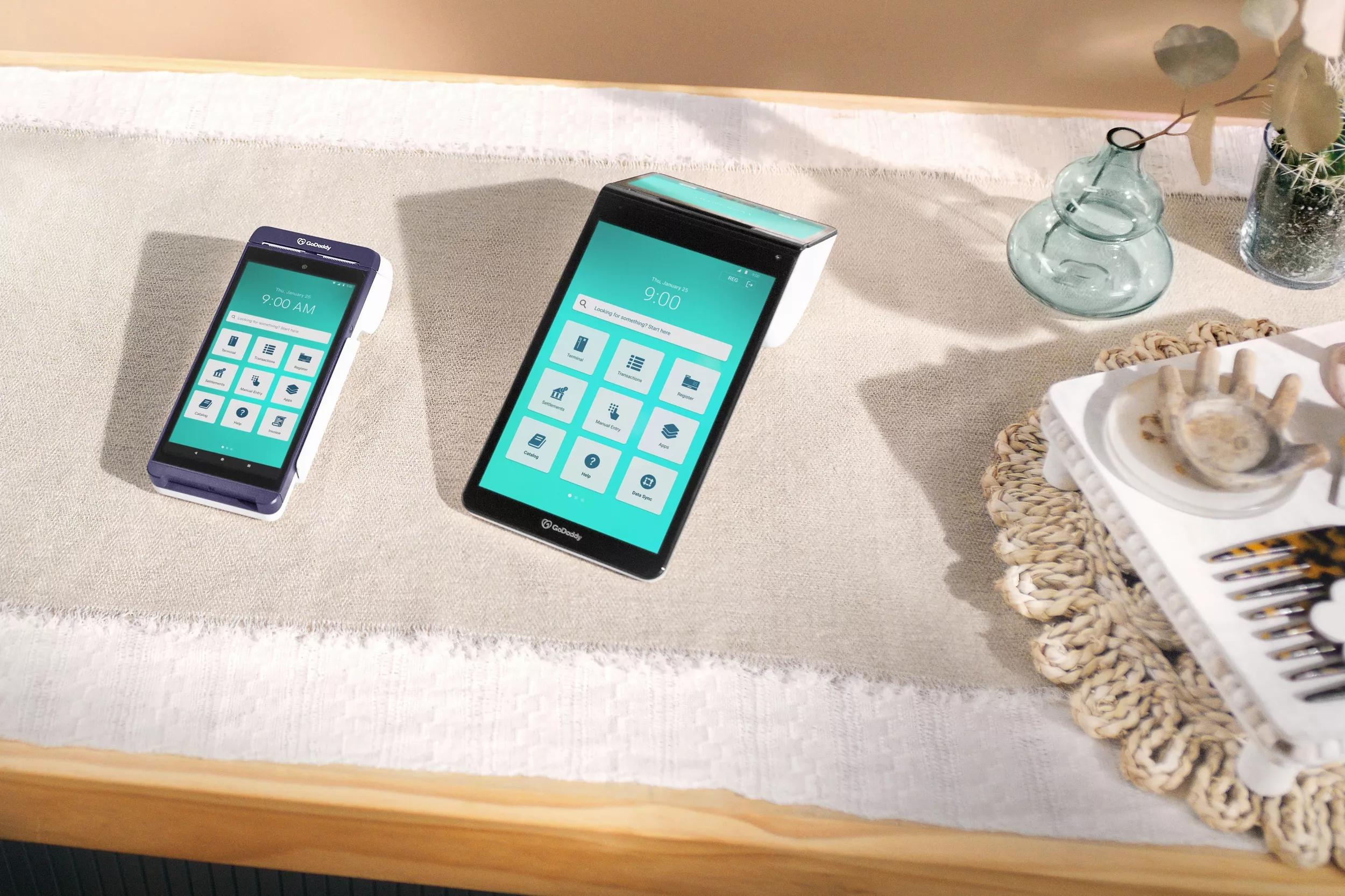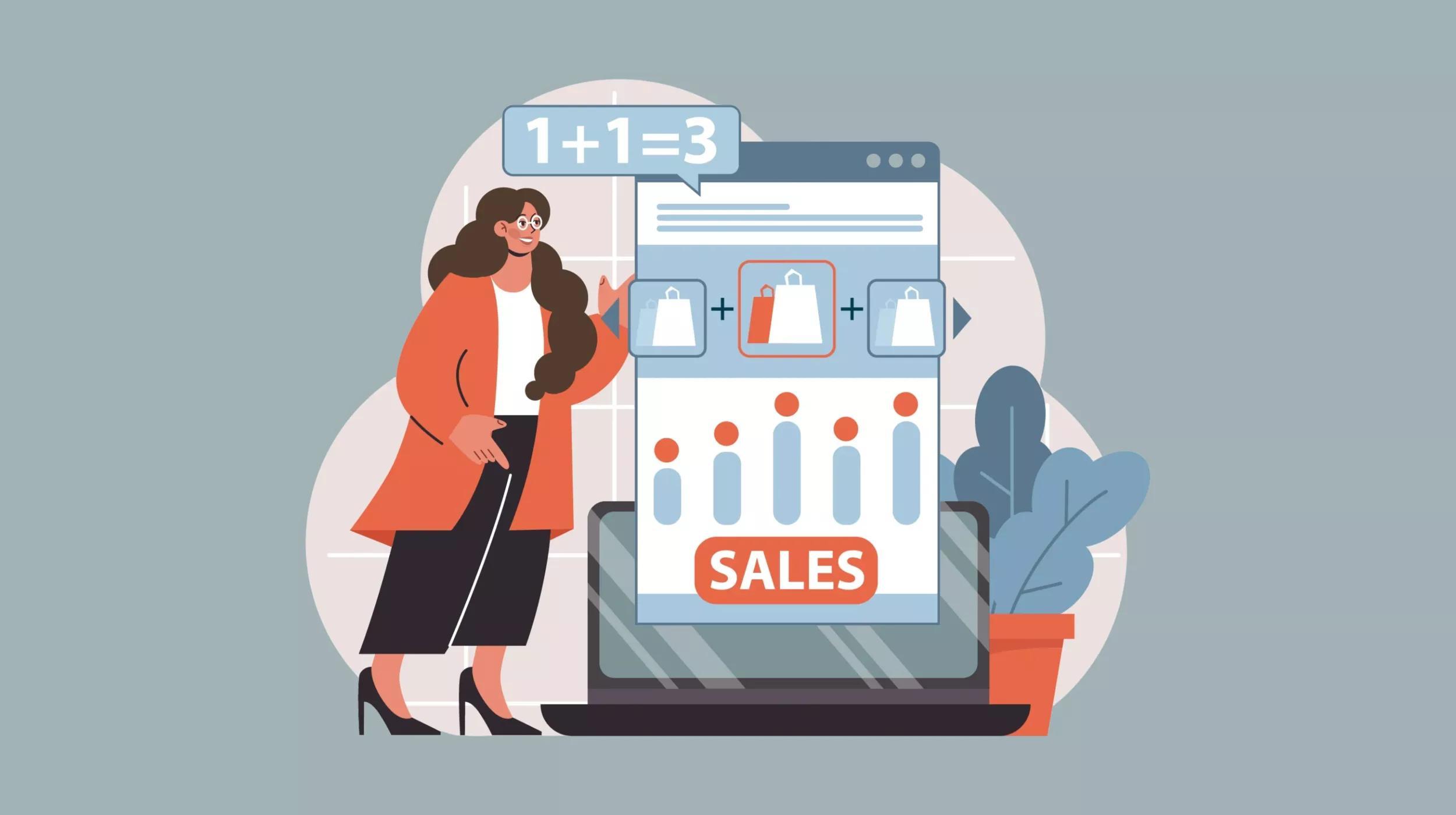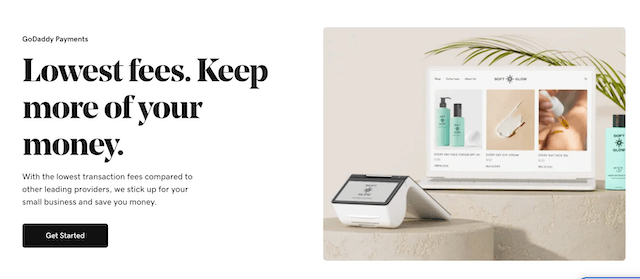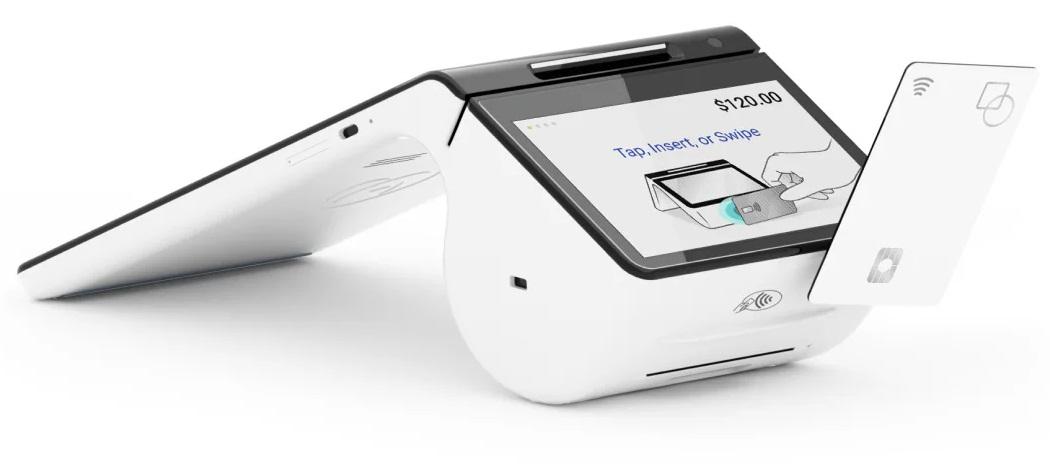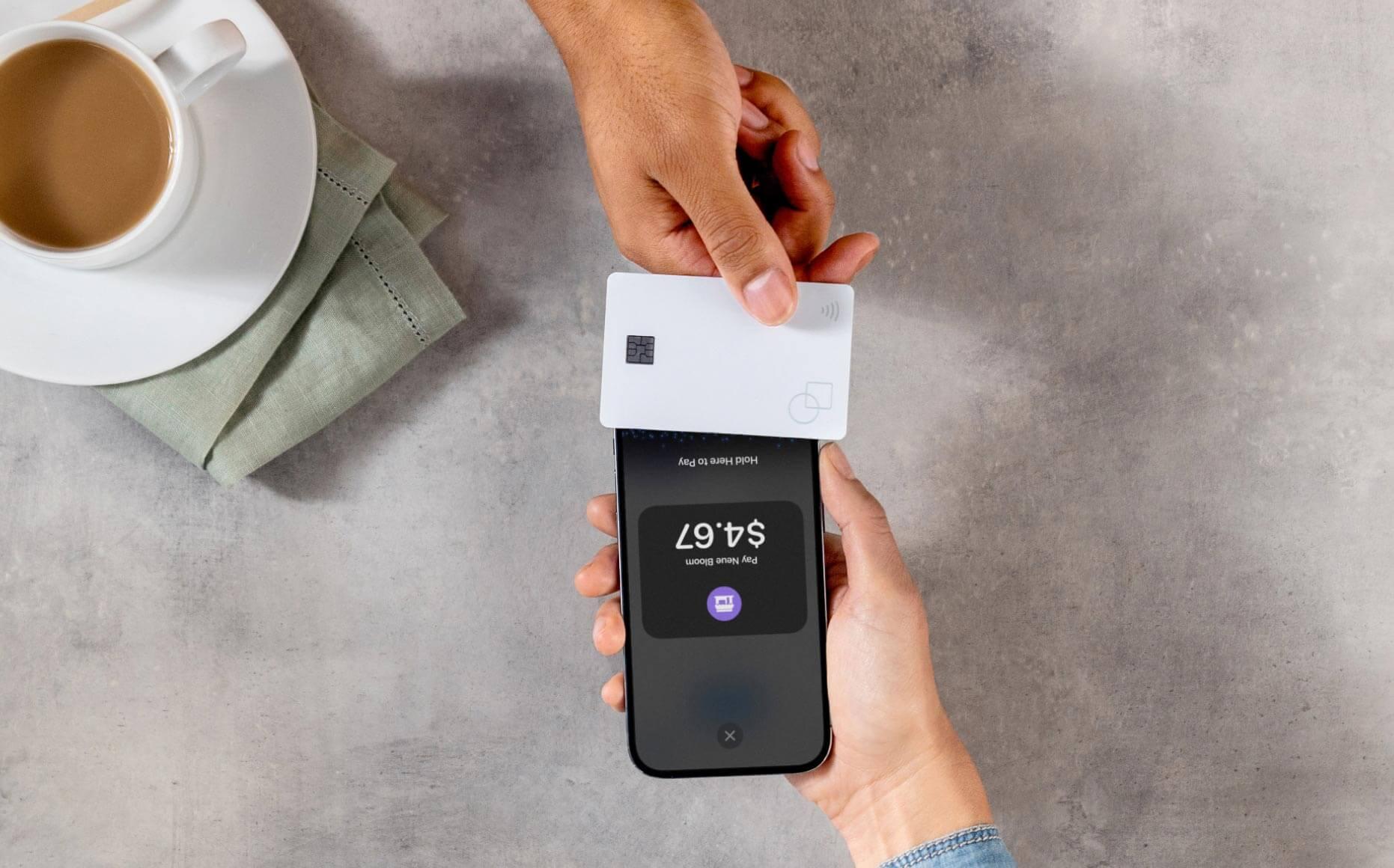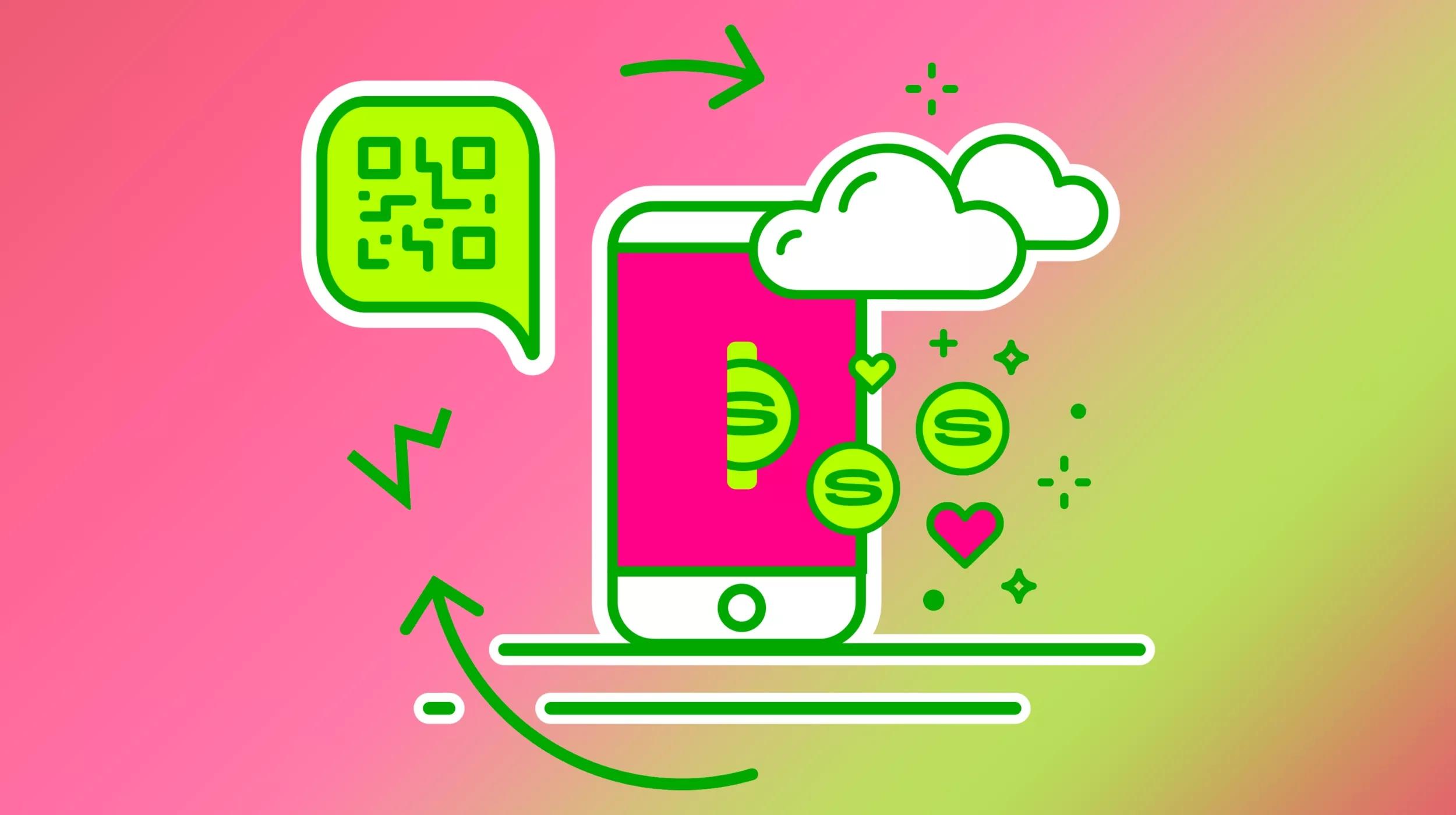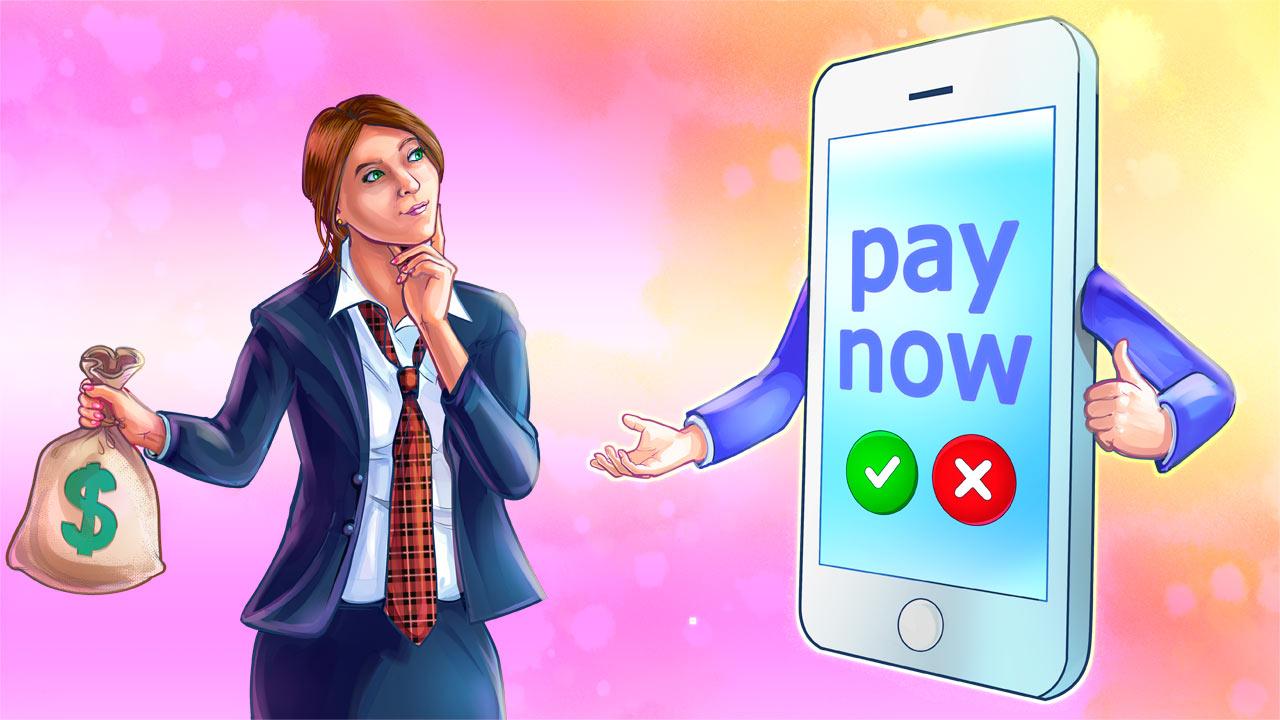Now, more than ever, it's essential to use the right point-of-sale (POS) system for your store, restaurant, or pop-up to keep your checkout lines moving and to ensure your customers' transactions are fast and secure.
Your POS system must also enable them to pay the way they want, wherever they are. Read on to learn what is a POS system and how to select the right one.
Disclaimer: This content should not be construed as legal or financial advice. Always consult an attorney or financial advisor regarding your specific legal or financial situation.

Go from idea to online in minutes with GoDaddy Airo™
Get started now.
What is a POS (point-of-sale) system?
A point-of-sale (POS) system is a comprehensive package comprising hardware, software, and payment services used by businesses to complete transactions and manage operations. These transactions can take place in various locations such as physical retail stores, events, pop-ups, or even online.
POS systems are made up of hardware, software, and a payment processing service:
Hardware
Think of the hardware in a POS system as your trusty toolkit. You'll typically find a register, barcode scanner, card reader, cash drawer, and receipt printer. These tools help you scan product barcodes or QR codes, or you can even manually enter prices.
Software
On the software side, the POS system installed on your hardware does the heavy lifting. It calculates taxes, processes payments securely, and often comes with handy features like product catalog searches, inventory alerts, and appointment scheduling.
Payment processing service
The cherry on top is the payment processing service included in most POS systems. This service makes sure all electronic payments—whether they're credit cards, debit cards, or digital wallets—are authorized and settled securely and efficiently. So, you can focus on serving your customers without worrying about the nitty-gritty of payment transactions.
How does a POS system work?
A POS system is a combination of hardware and software that allows businesses to complete sales transactions both in-person and online. So as a payment from a sale is processed through your POS, it must first be verified with your customer's bank (for debit cards) or with their credit card merchant before the transaction can be completed. Once the payment is approved, the POS system will then work with your bank to make sure that money is deposited into your account as soon as possible.
Read our guide on payment gateways to better understand the payment process
What are some common POS system features?
Here's everything you'll need from a POS system to start selling quickly, easily, and securely across all of your sales channels.
POS systems hardware overview
Ideally, a POS machine comes ready out of the box with everything built-in for a convenient in-person checkout process. POS systems include terminals, card readers, self-service kiosks, etc.
Some of the better features of POS system hardware include:
- Dual screens — a dedicated screen for you and one for your customers
- A paper receipt printer
- A barcode scanner to quickly scan product UPCs and QR codes
- End-to-end encryption with strict payment cards industry (PCI) security compliance
- Lightweight and handheld for in-store mobility
Smart terminals also work with other in-person payment options, such as tap-to-pay and a card reader. These payment options are often better for payments on-the-go.
POS system software overview
Some of the better POS systems let you configure your new hardware online before your shipment arrives. For example, you can add your product listings in advance, upload company logos, and customize printable receipts.
This means your device is then ready to accept transactions as soon as it's out of the box and connected to your Wi-Fi.
It’s important to look for a POS system that’s scalable and versatile, so you can manage and track every sale you make online or in-store, rather than using software that can only be installed locally on your device and does not integrate with other payment data.
Some of the better POS systems come with a dashboard that keeps you organized and enables you to quickly track your inventory and view metrics on how your small business is performing — with the help of visual graphs to map your sales and orders.
The dashboard can also let you compare the performance of sales across all the places your business sells — giving you access to in-person sales and online orders from Amazon to Google Shopping, Instagram, Facebook and more.
POS payment processing overview
Your POS system should process all major credit and debit card transactions and offer additional ways for customers to pay via a digital wallet on their phones. Be sure to get a card reader or POS terminal with a battery that lasts all day and enables your customers to tap, dip and swipe to process your payments anywhere you sell.
Wifi connectivity is also important when considering a POS system. Or, if you're planning on selling where a wifi connection is unavailable, we recommend ensuring that you select a POS system that allows for cellular access.
Many shoppers adopted this payment method during the global pandemic and plan to continue using it in the future. If you sell on the go at a local farmer's market, pop-up, or event, you can use a card reader like GoDaddy's portable Card Reader with a docking station for all of your card and contactless payments.
Do I need a POS system?
No, not every business requires a POS system. If you run a retail store, restaurant, or any customer-facing service that handles sales transactions, a POS system can streamline operations, improve accuracy, and enhance customer experience. For smaller operations, a simplified or mobile POS system might be sufficient, offering basic functionality at a lower cost. However, if you run an online-only business, a POS system wouldn't be needed at all.
Who can benefit from using a POS system?
Small businesses with a large number of SKUs, as well as businesses that sell in a physical retail location, pop-up, or farmer's market, are the most likely to use POS systems with a Smart Terminal or Card Reader.
Some examples include:
- Boutique managers who sell unique, high-valued items
- Bodega owners who sell everything under the sun
- Bakeries, coffee shops, or tea shops that might sell premade taxed food items, along with dry goods or kitchenware
- Restaurant or food truck owners who need wireless solutions
- Pop up shops or events where retailers can promote and sell items on the go
Pros and cons of using POS systems
Here are some pros and cons to help you decide whether or not to invest in a POS system at this time.
POS system pros:
- POS systems help with inventory tracking and management
- They process all types of payments from one device, quickly and securely
- Lets your customers pay however they want, wherever they want
- Versatile, so your system can scale as your business grows
- Many POS systems work with Avalara, which is a tool that calculates your sales taxes for you, saving you time and money
- POS systems enable you to create and scan QR codes and add coupon codes or loyalty reward programs
- Many can be customized with your branding for receipts or email payment confirmation
- Some systems integrate with online sales and let you seamlessly track your sales data wherever you sell
- Many POS systems come with free trials
POS system cons:
- Some POS systems providers have hidden fees or long-term contracts
- Some POS systems are hardware-dependent
- Many require you to sell while a customer is present
- Some POS systems are less reliable than others and harder to set up to start selling right away
- A POS system might not fit your current business model or clientele needs
- Quality of customer service varies between POS systems
What is the average cost of a POS system?
The average cost of a POS system varies widely, from $0 up to $2,000 for the first year when including hardware, software, and installation fees. The hardware alone can range from $0 to $1,700 per terminal and the software fees typically fall between $0 to $300 per terminal.
After the initial purchase and setup, ongoing average costs are around $1,000 per year depending on factors like inventory size, number of registers, industry number size, revenue, add-on features, etc.
Some companies offer free POS software, and some even include free POS hardware. It's important to keep in mind that POS system costs are highly variable, with both cheap and premium options in the market.
These costs are dependent on:
- The number of registers you'll need: Additional registers may come at a discount if you're buying in high-volume
- Your inventory size: Managing a large number of SKUs will sometimes cost more
- Employee numbers: Some POS systems charge for each employee in the system
- Industry specificity: For example, it may cost more to use some restaurant POS systems, which need to integrate a kitchen cash register with hand-held restaurant POS devices
- Add-on features: There may be an additional monthly cost for adding gift cards or loyalty programs to your POS system

Payment processing costs
When you accept credit card payments, there's usually a fee that comes with it, typically ranging from 1.5% to 3.5% per transaction. This fee covers several smaller fees that go to the credit card network, the bank that issued the card, and the payment processor.
There are a couple of ways these credit card processing fees are calculated. One common way is a flat-rate model, where you pay a percentage of the transaction amount plus a small, flat fee. Another way is called the interchange-plus model, which can be a bit more complex.
In general, businesses might see higher fees for online or card-not-present transactions compared to in-person sales. And don't forget, depending on your payment processor, you might also encounter some extra charges like chargeback fees and PCI compliance fees.
Note: GoDaddy Payments offers the lowest fees per in-person transaction in the industry. There are no long-term contracts or monthly minimums and no unexpected fees, either.
What are the types of POS systems?
There are three common types of POS systems that you're likely to encounter: a legacy POS system, a cloud-based POS system, and a mobile POS system.
Legacy POS systems
Traditional POS machines and systems store your sales data on local servers in a closed internal network. However, this scenario can make you vulnerable to system crashes and technical issues — leading to long checkout delays and angry customers. Many grocery stores and big-box stores might still be using these legacy systems.
Cloud-based POS systems
These newer POS machines and systems can process credit and debit card transactions anywhere and store your sales data in the cloud. If there is an online technical problem, most cloud-based systems also work offline to save you from lost sales and customers. Cloud-based systems work with mobile-optimized POS machines to process customer payments however they want and wherever you interact with them.
Additionally, you can view and analyze your sales data from anywhere in real-time via a cloud-based dashboard across all of your sales channels.
Cloud-based POS systems are also often easier to use and more affordable.
Mobile POS systems
A mobile point of sale (mPOS) is a wireless, portable device, typically consisting of simply a smartphone or tablet. This mPOS performs the same payment functions as a standard cash register or conventional point-of-sale system in a smaller footprint. Essentially, it serves as a digital and highly flexible alternative to the traditional cash register. Rather than being confined to a specific location, an mPOS allows businesses to conduct transactions anywhere.
Finding a versatile and transparent POS solution
Now that you know what is a POS system, and how it works, take the time to carefully evaluate your options (we suggest checking out our comparison on the best payment processors to get started).
Additionally, you don't want any surprises when you receive the hardware and find out that it doesn't integrate with your online system. Or that the transaction fees are steeper than you anticipated.
Look for a scalable and integrated POS software solution that lets you sell wherever your customers are and enables your customers to pay the way they want.
To learn more about GoDaddy Payments and credit card processing, read: How to accept credit card payments in-store and online.
